About three years ago, Aileen Budow went in for breast reduction surgery — and ended up with a breast cancer diagnosis.
"There's a fly in the ointment," Budow, 54, recalled her surgeon telling her at the time. She was diagnosed with stage 2 invasive lobular carcinoma, she told TODAY, which is a type of breast cancer that starts in the milk-producing glands, the Mayo Clinic explains.
Budow, who works in public relations and is a single mother by choice, didn't need radiation or chemotherapy. But she did undergo a double mastectomy and reconstruction. Unfortunately, her surgeons weren't able to save her nipples during the procedure. "It was going to be a game-day decision," she said, and it ultimately just didn't work out.
Seeing herself without nipples was "jarring," she told TODAY. “As silly as it seems, when you look at yourself, you’re looking differently. Your self-esteem is a little different.”
But with the help of specially trained staff at Memorial Sloan Kettering Cancer Center, Budow was able to get realistic 3D-looking nipple and areola tattoos instead.
Hospitals have gotten better and better at providing quality nipple tattoos
Just a few years ago, surgeons at Memorial Sloan Kettering would do tattoos themselves, Caitlin Giles, a physician assistant in plastic and reconstructive surgery services at the hospital, told TODAY.
"They would do it in the office. We had a completely different machine, and we didn't have the capability to do details," she said. "We had probably five colors that you could choose from; it was like pink or brown."
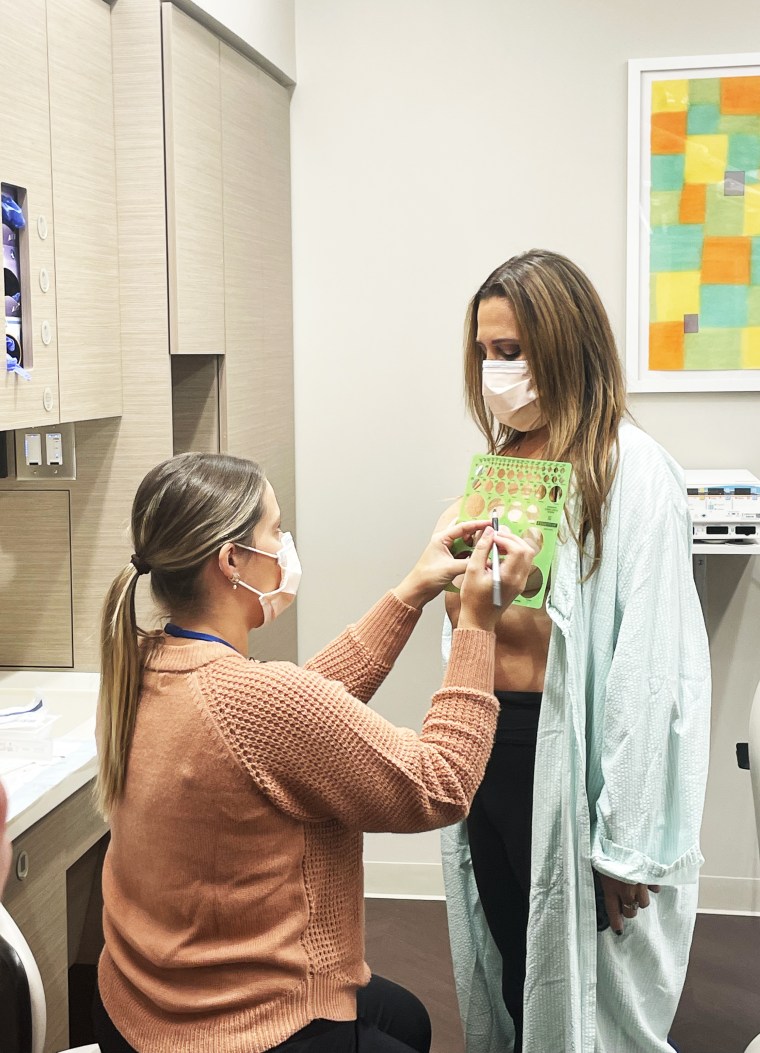
That's why "a very small number of patients really completed that," Giles said. "And to be honest, we didn't encourage patients to do it because the results were pretty suboptimal."
If patients wanted to pursue more realistic nipple tattoos, the hospital would refer them out to medical tattoo specialists, like Vinnie Myers or Mandy Sauler.
But in 2017, a group of about five physician assistants at the hospital — including Giles — took it upon themselves to undergo training with Sauler and become licensed tattoo artists to provide this service themselves. From there, the program has grown exponentially: In the first year it existed at Sloan Kettering, the team did about 40 tattoos, Giles said. In 2021, they did more than 700.
The tattoo process gives survivors back some control over their bodies
For Budow, the tattoo procedure is the final step of a long journey — and it's a step that allows her to take back some ownership of a body that's had many choices made for it recently.
“This is me being done, and I can I say I’m a survivor, but now, the scar is not a scar. I look at this tattoo like a badge of honor,” she told TODAY. “That’s really what’s so exciting about this being that last part — it’s the part that I have control over.”
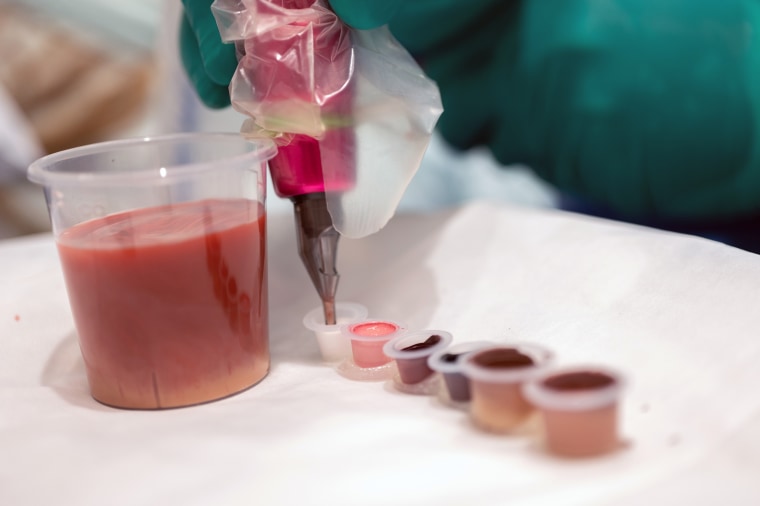
Budow, a longtime New Yorker, moved to Boca Raton, Florida, during the pandemic and traveled back to the city for her appointment.
The first step in the office was for Giles to draw stencils on Budow’s breasts in the place and size that Budow preferred. From there, Giles mixed various ink shades together and tested them on Budow’s skin. In the weeks before the appointment, Budow tried out different shapes, sizes and colors of nipples on her skin using temporary tattoos.
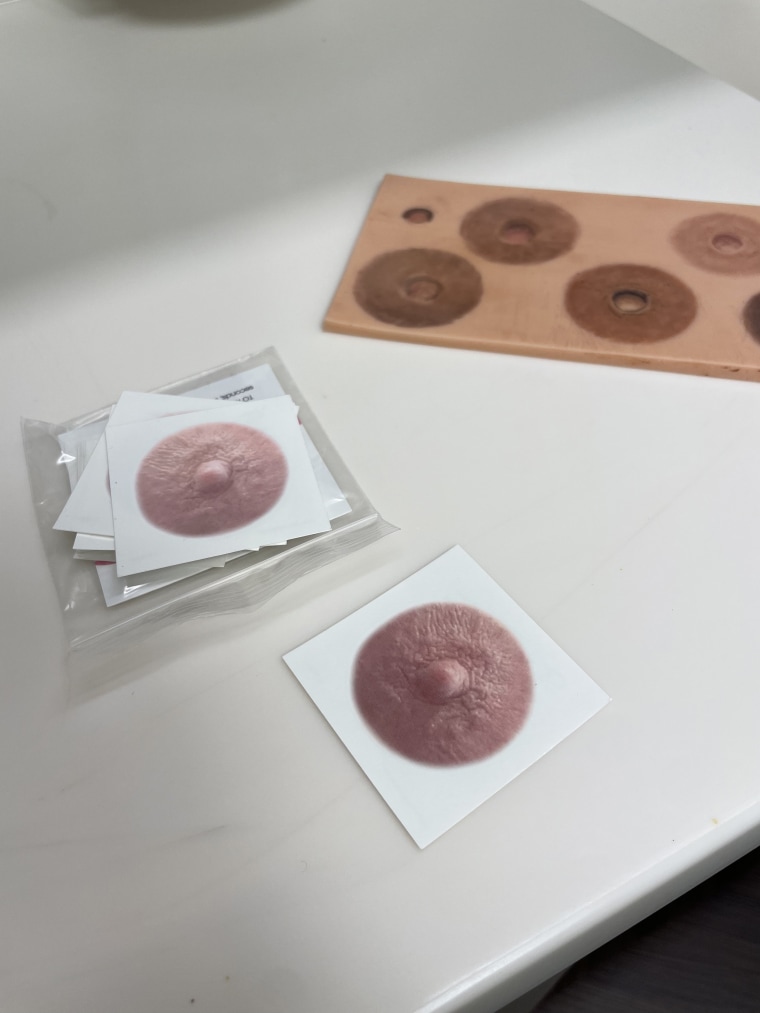
Giles started with a test spot on Budow to see what level of sensation she had in the breast and how her skin took the ink. Budow felt a light pinching sensation in one breast and had no pain in the other.
Then Giles got to work on the tattoo. She started with the basics of the nipple and areola on one breast, then the other. Then she went back to finish the details on both. The whole process took about two hours, during which Budow FaceTimed with her mom and her friends to show off Giles's work in progress.
When Budow sat up to see the finished product, just one word went through her mind: "Wow." She stood up to examine herself in the mirror and, ecstatic with her results, quickly embraced Giles.
More hospitals are offering the procedure — but not everyone has the same level of training
Mandy Sauler quite literally grew up in traditional tattooing — her mom owns a tattoo shop, Sauler told TODAY. And after about nine years of doing traditional body art, she discovered the world of medical tattooing and started working with Penn Medicine.
She quickly learned that, as Giles mentioned, the surgeons providing nipple tattoos in medical settings were not generally up to the task. "It was being done so widely, and it was being done so poorly that a lot of patients were suffering from it," she said. For example, some people were using iron oxide-based inks that fade quickly rather than permanent tattoo inks, Sauler said.
And there are many factors to keep in mind when providing tattoos for a clientele whose bodies have endured so much: Radiation, scarring and the type of reconstruction procedure, for instance, can all affect the tattooing and healing processes, Sauler said.
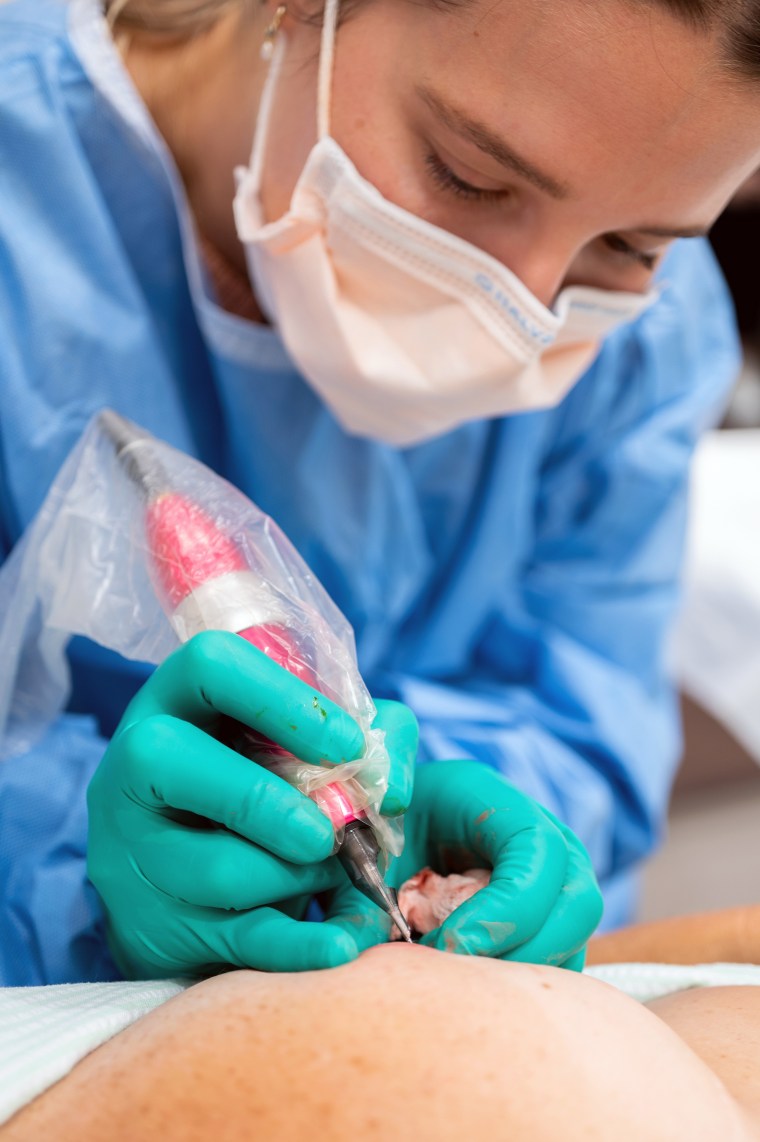
Today, Sauler trains all kinds of people, including health care professionals, tattoo artists and estheticians, to create medical tattoos. But despite the fact that staff at more hospitals are being trained to create tattoos, she urges anyone who's thinking about getting post-mastectomy tattoos to research their artist first.
In particular, she suggests asking for photos of the person's previous work, getting a sense for the type of training they've had and inquiring about what kind of inks they use.
The other thing to keep in mind, Sauler said, is insurance coverage. If the tattoo is done by a medical provider at the hospital that a patient has already been going to, it may be a more seamless process to get the tattoo covered by insurance, Giles said.
People who want more creative art on their breasts, like flowers or heart-shaped areolas, typically need to find an artist outside of the medical system, but they still may be able to get reimbursement from their insurance, Sauler and Giles explained. (Giles often tells patients that the team at Memorial Sloan Kettering are "circle experts," meaning they don't stray from the realistic look.)
Sometimes, hospitals bring in trained tattoo artists, like Sauler, for regular appointment slots.
For some breast cancer survivors, nipple tattoos help them feel "whole again"
After her tattoo appointment, Budow met up with friends in the city and went out to celebrate. A few days later she'd had no issues with the healing process and said she was "still floating" after the experience.
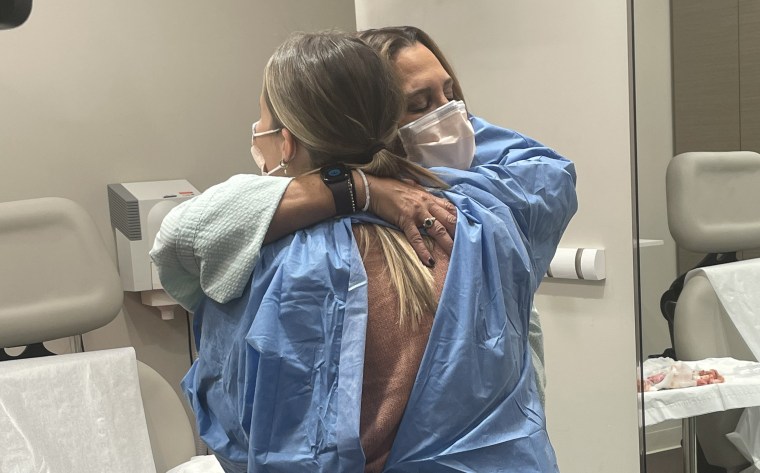
“When I look at myself in the mirror, I feel whole,” she said. “I don’t see my scars. I see my breast is reconstructed, but I see a whole breast. ... I feel like I’m back.”
Budow also explained the tattoos to her 10-year-old son, who has been by her side through the diagnosis and surgeries.
"I never wanted him to feel that I was going to be less of a mom to him or that I couldn't do something, and I know he saw the strength in his mom through all this," she said.
“The main thing I wanted to show him was that his mom was one bada-- b----."
Related:
